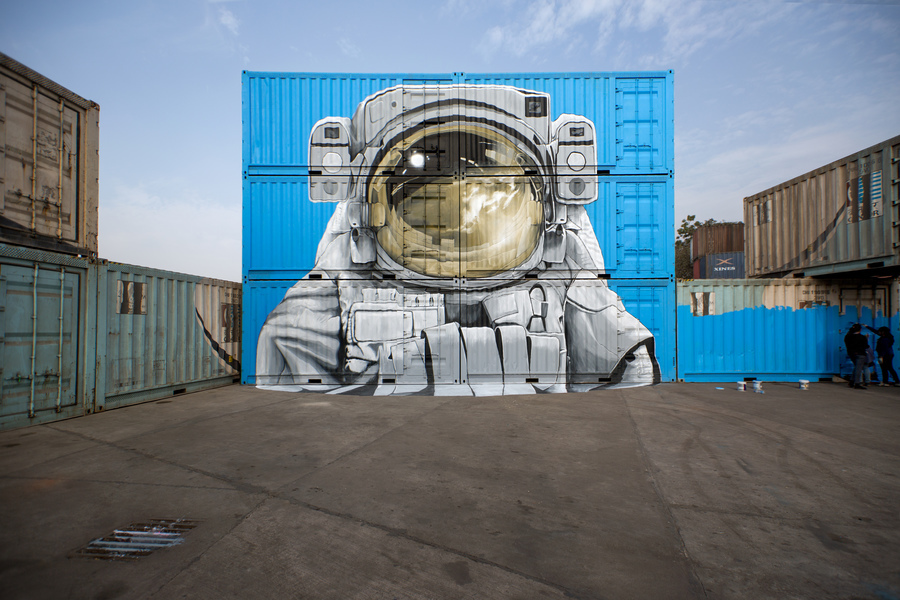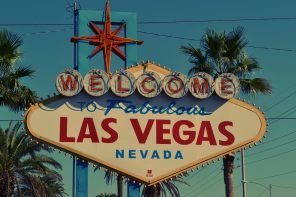St+art‘s initiative is beautiful, simple and made for the average, ordinary artist in India that wants to share their work with a larger audience: they have been adding colourful street art to India and making it a lot brighter, prettier and interesting, as part of their campaign to give young Indians a fresh perspective on art. Their aim, they say, is to
provide a platform for street artists from all over the world to come and connect with the Indian movement. It is also a platform for Indian artists to showcase their work and exchange ideas with the global community.
Our two articles featuring them in the past have explored their contributions to getting started on street art in India, which is getting a jump start thanks to them. Their WIP Show, at ICD, Tughlakabad, as part of their St+art Delhi 2016 festival was a temporary, walk-through installation in the constantly transforming space of a container depot that blew us away with its magnitude and beauty. Read on to learn more about eight of the street artists involved with the initiative.
1. Tracing Faces
Henrik Beikirch is a German street artist, also known by his tag ‘ECB,‘ known for producing works of gigantic proportions. His works are also provocative as they touch on social issues of the area he is creating art in. His portrait of a fisherman in South Korea, for instance, which is the highest mural in Asia, is to do with the displacement of many fishermen in Busan due to the building of skyscrapers. Furthermore, his “Lavanya” in India, which took him 72 hours to complete, is deeply linked to an individual: Vimla, who sells paranthas in Khan Market, unusual for a woman of her social class. Beyond his extensive work in India with St+art, he has also traced faces all through Morocco as well. Beikirch finds it exciting to work with dimensions and, according to his website, his is a
modern take on classical portraiture, reduced in its colour palette, ambivalent in its reserved presentation, yet full of warmth and infused with a rich sense of humanity.
2. Turning Streets into Neverland
The Swiss-based artists’ duo, Nevercrew, comprising of artists Christian Rebecchi and Pablo Togni, tries to explore, through their work, a new language, provoking ideas of confrontation. Their art is a discussion and a memory. It is not only larger than life and out of the box, but is free of any restrictions, seemingly finding its own space in which to express itself. Nevercrew‘s projects are always thought-provoking, too, and consistently strike the balance between attractive and meaningful.
These guys definitely make it look easy and effortless. We’d definitely suggest looking at more of their pieces; they are all visual delights. As Grafitti Art Magazine (issue 28) writes, they
seem to be artistically united yet attentive to their differences, proclaiming their own contradictions.
3. A Flair for Fusion
Australian artist Reko Rennie, who travels to spray paint the Berlin Wall, the streets of Melbourne, Shanghai, Paris and more, draws on both contemporary street art and Australian Aboriginal art. His use of intricate and colourful patterns reflect his heritage, as does the presence of family and history in his works. He says,
my work often references the hip-hop and graffiti subcultures that were influential on my artistic practice in my formative years.
An indigenous, urban Australian, Rennie nevertheless uses modern mediums to express the experiences of the natives. He deals with recurring images of luxury and royalty in his works, in an attempt at “reclaiming” and interrogating them.
4. Word on the Street
Niels Muelman, also referred to by his tag ‘Shoe,‘ of Unruly Gallery
“We are unruly, we make art” the website proclaims. With “abstract vandalism” as one of the forms mentioned, we can tell Unruly Gallery does not stick to rules.
Surrealistic plots become real and manifest in elements that the viewer attributes to his own moral stands, personal conflicts and dilemmas,
in the artists’ works. Shoe‘s almost-calligraphic, mesmerising strokes evoke traditional and classical elements whereas his choice of genre is placed firmly in the present, contrasting cleverly and in such a way as it can be juxtaposed. He describes his ‘calligrafitti’ as ‘abstract expressionism’ with traditional origins.
5. Spray it, Don’t Say it
Gaia, who has been listed in Forbes’s 30 Under 30, is a Baltimore-based street artist. He uses animal imagery to highlight his focus of bringing in nature to the urban landscape. Over the last several years, he has been creating large-scale murals worldwide to engage the community where he works in a dialogue by using historical and sociological references to these neighbourhoods. He has said, of his interest in civil and human rights,
It may be super naïve, but if I’ve been given this opportunity to speak, I might as well speak well.
Being a “white kid from the Upper East Side” doesn’t stop Gaia him from identifying with his work on many different levels.
6. Tones of Anarchy
Iranian street artist Nafir has been revolutionising street art in Iran since 2008. Drawing from contemporary social issues as well as his own cultural background, Nafir‘s works are always a beautiful blend of modernity and heritage. He creates mostly stencils on a number of Tehran walls and his witty and direct art tends to speak for itself.
Nafir believes that his art work is no more vandalism than that already done by common citizens, as he feels “every single man and woman” in Iran has anarchy in them, out of defiance of the government.
7. Dwice the Art
Dwa Zeta, one of the most creative street artist duos from Poland, comprising of the pair Karolina Zajączkowska and Zbiok Czajkowski, was involved with St+art India at WIP as well as previous projects. Their installation in Lodi Art District, uses abstract forms referring to
the flow of Delhi streets which reflect their impressions of the hectic, crowded, yet potent and colourful nature of the city.
Since they also felt a lack of feminine equality in the flow of the city, they chose bright pink as the main colour for their wall to figuratively mark the feminine element in a public space, to pay a tribute to women who are afraid of being visible so as to empower them, and establish the city as their own.
The layers and colours in their work keep it exciting and fresh.
8. Borondo’s Mondo Art
Street artist Borondo grew up painting the hallways of his house in Spain and strengthened his relationship with graffiti over the years. In his Lodhi colony piece, he uses the facade to create a transcendental classical architectural piece. St+art explains,
Since this wall is located opposite a maternity hospital, Borondo […] interprets the concepts of life and birth. The open arch in the middle of the wall and the tree [that] inhabits it are a metaphor for the origin of life, while a river flows through the arches into infinity, reflecting the journey of life.
Borondo regards this entire scene as being synonymous with the birth of a child, who has to pass through a mothers womb to begin its journey.
Borondo finds pleasure in experimenting with different techniques and studying the old masters of painting, working predominantly in public spaces, which are “his favourite gallery.”
These artists, along with St+art India, are successfully making our streets more interactive through the various urban art festivals they are involved with, in Delhi and around the world. In this global yet local art movement, artists transform the seemingly unchangeable spaces we live in. Turning public space and city walls into a lab for experimentation and discovery, artworks are made for the space that frames them, resulting in a far more provocative area than a gallery or museum, with no rules or restrictions imposed on the streets.
We welcome this “prolific, diverse and unlabelled” movement, as St+art India calls itself, and hope that these ‘st+artists’ continue to bring dull cities to life and reach a wider audience.


























